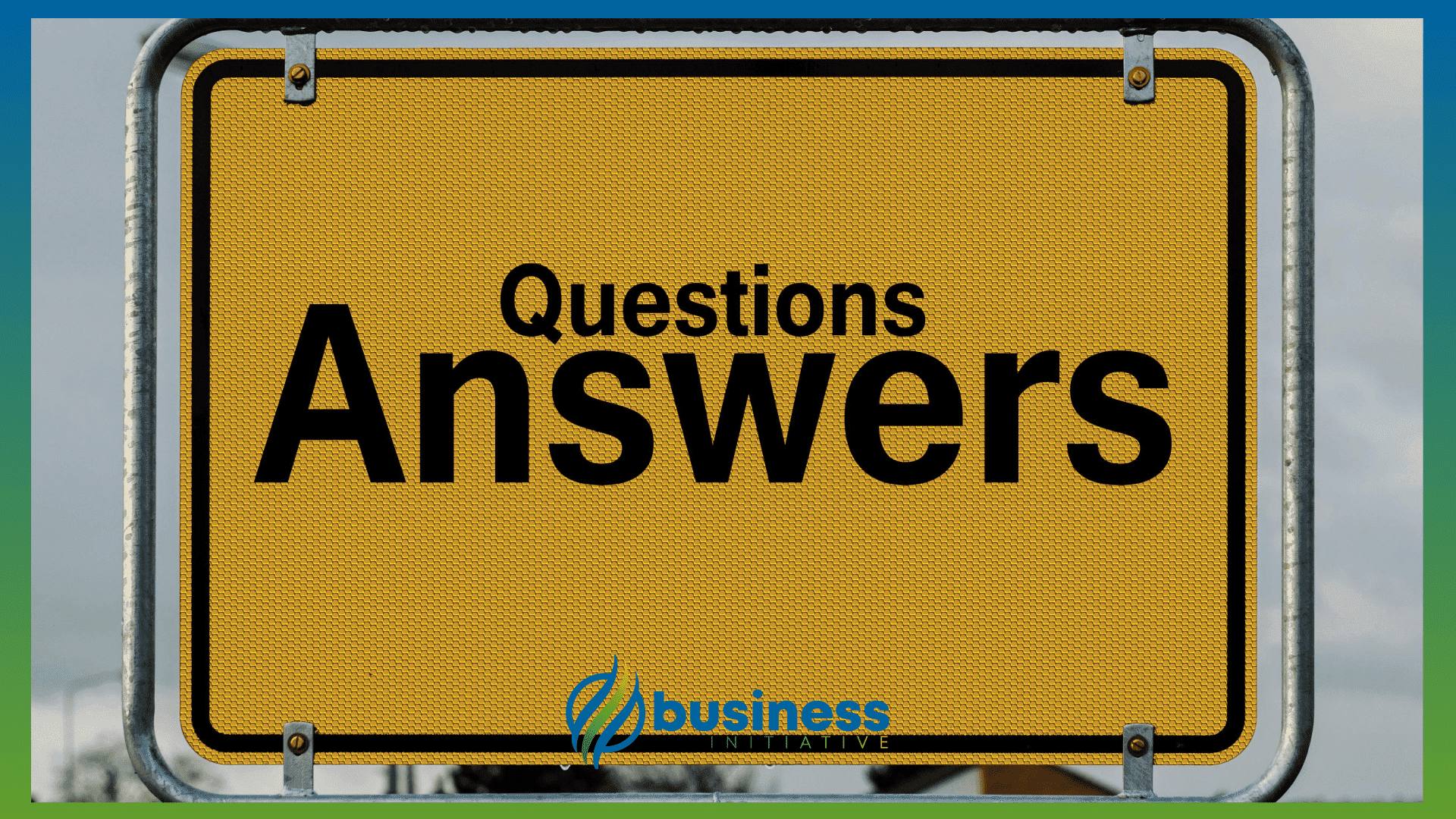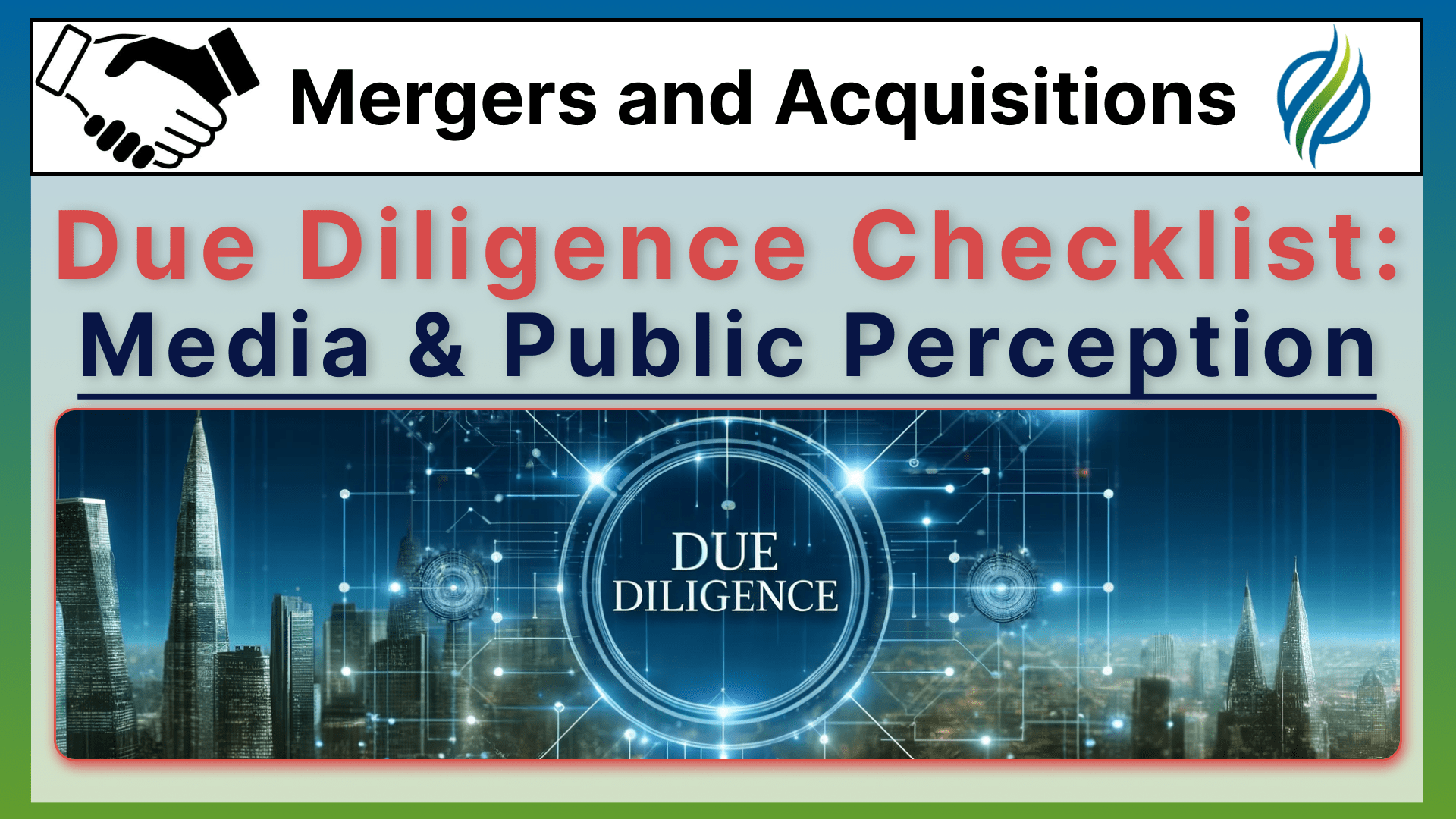Understanding media and public perception is crucial in mergers and acquisitions due diligence.
This article explains how to analyze news, social media, and public sentiment about a target company.
This analysis helps identify potential reputational risks and public relations issues.
It also highlights the importance of managing these risks for a successful acquisition.
 Key Takeaways
Key Takeaways
- Analyzing media coverage reveals public perception and potential PR issues.
- Social media profiles and open-source information provide real-time insights into public sentiment.
- Assessing brand and reputation helps identify risks and opportunities post-acquisition.
- Comparing the target company with industry peers highlights notable differences in media sentiment.
- Effective crisis management is crucial for maintaining a positive public image.
Reading this article, you’ll learn practical steps to assess media coverage, social media profiles, and brand reputation.
You’ll find specific actions to take, self-assessment questions to guide your analysis, and resources to dive deeper.
By following these steps, you’ll gain valuable insights and avoid common pitfalls in M&A due diligence.
Ready to enhance your due diligence process? Keep reading to master these essential techniques.
 Table of Contents
Table of Contents
Understanding the media and public perception of the target company is essential in the due diligence process.
This involves a thorough review of news and literature, in-depth analysis of social media profiles and open-source information, and careful assessment of the potential impact on the company’s brand and reputation.
A comprehensive analysis helps identify any public relations issues or reputational risks that could affect the acquisition’s success.

➤ MORE: Check out the FULL Due Diligence Checklist here
Review News and Literature for Public Perception Analysis
Analyzing news articles, press releases, and other literature provides insights into how the target company is perceived by the public, media, and industry stakeholders.
This process helps identify any negative publicity or public relations challenges, which are crucial for understanding the potential impact on the acquisition.
Practical Benefits:
-
Identifies potential PR issues that could impact the acquisition.
-
Provides a baseline for understanding the company’s current public image.
-
Helps in assessing the company’s standing in the industry.
Importance:
Understanding the media perception of a target company is vital for anticipating any public relations challenges that could arise during or after the acquisition.
Negative media coverage can significantly impact the company’s reputation, affecting customer trust and stakeholder confidence.
Practical Steps:
-
Conduct Media Searches: Use news databases and search engines to gather articles, press releases, and reports about the target company. Focus on recent coverage to understand current public perception.
-
Evaluate Sentiment Analysis: Analyze the sentiment of the media coverage to determine whether it is positive, negative, or neutral. Identify any recurring themes or issues highlighted in the media.
-
Identify Key Events and Issues: Highlight key events, controversies, or issues that have received significant media attention. Assess how these events have impacted the company’s public image and stakeholder relationships.
-
Compare with Industry Peers: Compare the target company’s media coverage with that of its industry peers. Identify any notable differences in public perception and media sentiment.
Self-Assessment Questions:
-
What is the overall sentiment of the media coverage about the target company?
-
Are there any significant controversies or issues highlighted in the media?
-
How have these issues impacted the company’s public image and stakeholder relationships?
-
How does the target company’s media coverage compare with that of its industry peers?
-
What are the recurring themes or issues mentioned in the media?
Analyze Social Media Profiles and Open Source Information
Social media profiles and open-source information provide additional insights into the target company’s public perception and any potential reputational risks.
Analyzing these sources helps identify public sentiment and any social media controversies that may affect the acquisition.
Practical Benefits:
-
Identifies social media-driven PR issues and public sentiment.
-
Provides a real-time view of public opinion and trends.
-
Highlights any grassroots movements or community issues.
Importance:
Social media analysis is crucial as it offers real-time insights into public opinion and potential reputational risks.
Understanding social media sentiment can help anticipate public reactions to the acquisition and plan appropriate communication strategies.
Practical Steps:
-
Review Social Media Profiles: Analyze the target company’s official social media profiles on platforms such as Twitter, Facebook, LinkedIn, and Instagram. Assess the content, engagement, and public sentiment of the posts and interactions.
-
Monitor Social Media Mentions: Use social media monitoring tools to track mentions of the target company across various platforms. Identify any trending topics, hashtags, or discussions related to the company.
-
Evaluate User-Generated Content: Review user-generated content, such as reviews, comments, and posts from customers, employees, and other stakeholders. Assess the sentiment and themes of these posts.
-
Gather Open Source Information: Collect open-source information from forums, blogs, and other online communities. Identify any additional insights or issues not covered in mainstream media.
Self-Assessment Questions:
-
What is the overall sentiment of the target company’s social media presence?
-
Are there any recurring themes or issues mentioned in user-generated content?
-
How engaged are followers and stakeholders with the company’s social media profiles?
-
What trending topics or discussions are related to the target company?
-
What insights can be gathered from open-source information about the company?
Assess Potential Impact on Brand and Reputation
Assessing the potential impact of public perception on the target company’s brand and reputation helps identify any risks or opportunities that could influence the success of the acquisition.
This evaluation is critical for understanding how the acquisition might affect the company’s market position and stakeholder relationships.
Practical Benefits:
-
Identifies potential risks to the company’s brand and reputation.
-
Highlights opportunities to leverage brand strengths post-acquisition.
-
Provides a basis for developing a post-acquisition communication strategy.
Importance:
Understanding the potential impact on brand and reputation is essential for mitigating risks that could affect the success of the acquisition.
A strong brand and positive reputation are key assets, while reputational risks can lead to significant financial and operational challenges.
Practical Steps:
-
Identify Brand Strengths and Weaknesses: Evaluate the strengths and weaknesses of the target company’s brand based on media and public perception. Identify any unique selling points or brand attributes that differentiate the company.
-
Assess Reputational Risks: Identify any reputational risks highlighted by media coverage, social media analysis, and open-source information. Assess the potential impact of these risks on the company’s operations and market position.
-
Evaluate Crisis Management Capabilities: Review the company’s past responses to public relations crises or negative publicity. Assess the effectiveness of these responses and the company’s overall crisis management capabilities.
-
Plan for Reputational Management: Develop strategies to manage and improve the target company’s reputation post-acquisition. Consider rebranding, public relations campaigns, or stakeholder engagement initiatives as needed.
Self-Assessment Questions:
-
What are the strengths and weaknesses of the target company’s brand?
-
What reputational risks have been identified through media and public perception analysis?
-
How effectively has the company managed past public relations crises?
-
What strategies can be implemented to improve the company’s reputation post-acquisition?
-
How might the identified reputational risks impact the success of the acquisition?
FAQs - Frequently Asked Questions About Media and Public Perception in the Due Diligence Process of M&A

Why is understanding media and public perception important in M&A?
It helps identify potential PR issues and reputational risks.
Public perception can significantly impact the success of an acquisition.
Learn More...
Understanding media and public perception is crucial for identifying potential PR issues that could impact the success of an acquisition.
Negative media coverage or social media sentiment can harm a company's reputation, leading to financial and operational challenges post-acquisition.
By analyzing public perception, businesses can develop strategies to mitigate these risks and enhance their reputation.
How do I analyze media coverage for a target company?
Use news databases and search engines to gather recent articles and press releases.
Evaluate the sentiment and identify key events affecting the company.
Learn More...
To analyze media coverage, start by using news databases like LexisNexis and search engines such as Google News to gather articles, press releases, and reports about the target company.
Focus on recent coverage to understand current public perception.
Evaluate the sentiment of the media coverage to determine whether it is positive, negative, or neutral.
Identify recurring themes, key events, and issues that have received significant media attention.
What tools can I use for social media monitoring?
Use tools like Hootsuite and Brandwatch for tracking mentions and engagement.
Learn More...
For social media monitoring, tools like Hootsuite and Brandwatch are highly effective.
Hootsuite allows you to track mentions, engagement, and sentiment across multiple social media platforms.
Brandwatch provides deep insights into consumer sentiment and trends by analyzing social media data and user-generated content.
These tools help identify trending topics, hashtags, and discussions related to the target company.
How can I assess the reputational risks of a target company?
Review media coverage, social media sentiment, and open-source information.
Learn More...
To assess reputational risks, start by reviewing media coverage to identify any negative publicity or public relations challenges.
Analyze social media sentiment using tools like Hootsuite to understand public opinion and potential controversies.
Gather open-source information from forums, blogs, and online communities to identify additional insights or issues not covered in mainstream media.
Evaluate the company's past responses to public relations crises to assess their crisis management capabilities.
What steps should I take to evaluate a company's crisis management capabilities?
Review the company's past responses to public relations crises.
Learn More...
Start by reviewing the company's past responses to public relations crises or negative publicity.
Assess the effectiveness of these responses and the overall crisis management capabilities.
Look for patterns in how the company addresses and resolves issues, including the speed and transparency of their communication.
Effective crisis management often includes proactive planning, clear communication strategies, and engagement with stakeholders to restore trust.
Consider using case studies and reports from reputable sources like Harvard Business Review for more detailed analysis.
What are the benefits of comparing the target company's media coverage with industry peers?
It highlights unique challenges or advantages and provides a benchmark.
Learn More...
Comparing the target company's media coverage with that of industry peers helps identify notable differences in public perception and media sentiment.
This comparison provides a benchmark for understanding the target company's standing within the industry.
It highlights unique challenges or advantages that the target company may have, offering valuable insights for developing acquisition strategies.
Understanding these differences can help you better anticipate potential issues and opportunities.
In Summary…
Understanding media and public perception is vital in mergers and acquisitions due diligence.
By thoroughly analyzing news articles, social media profiles, and open-source information, you can gain critical insights into how the target company is viewed by the public and industry stakeholders.
This knowledge helps you identify potential public relations issues and reputational risks that could impact the success of the acquisition.
Practically, using this information allows you to:
-
Identify PR Issues: Spot negative publicity early and plan strategies to mitigate its impact.
-
Gauge Public Sentiment: Understand real-time public opinion to anticipate and manage potential controversies.
-
Assess Brand Reputation: Evaluate the strengths and weaknesses of the target company’s brand to make informed decisions.
-
Compare Industry Peers: Benchmark the target company against industry peers to identify unique challenges or advantages.
-
Plan Crisis Management: Develop effective crisis management strategies to protect and enhance the company’s reputation post-acquisition.
Applying these insights ensures you are well-prepared to handle any reputational challenges, ultimately leading to a more successful and smooth acquisition process.
Ready to improve your due diligence process?
Take the next step to secure your business’s future…
Schedule a consultation call with us or reach out with our contact form now to learn how we can help you achieve successful acquisitions.
Stay updated with our latest insights by subscribing to our Initiative Newsletter and follow us on X.
Sources
- LexisNexis News Database: For comprehensive media searches and news articles.
- Google News: For current news coverage and media sentiment.
- Meltwater Media Monitoring: For media monitoring and sentiment analysis.
- Hootsuite Social Media Monitoring: For tracking social media mentions and engagement.
- Brandwatch Consumer Research: For analyzing social media sentiment and user-generated content.
- Google Alerts: For monitoring open-source information and trending topics.
- Harvard Business Review on Crisis Management: For insights on managing corporate crises.
- Reputation Institute: For evaluating brand reputation and managing reputational risks.
- Crisis Management and Communications by the Institute for Public Relations: For strategies and best practices in crisis management.


